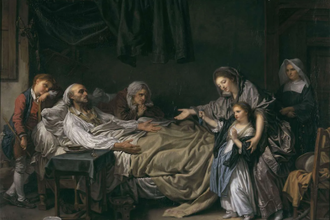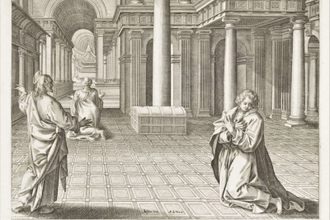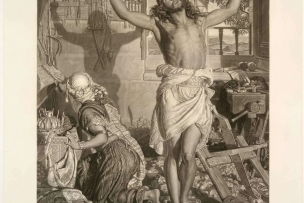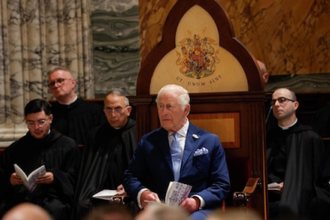Gospel in Art: The Most Holy Name of Jesus
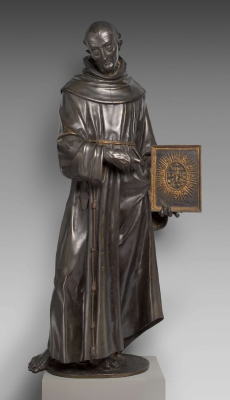
Saint Bernardino of Siena, scupture by Fulvio Signorini, Bronze and gilt-bronze, 1600 © Metropolitan Museum of Art, New York
Source: Christian Art
Gospel of 3 January 2025
John 1:29-34
At that time: John saw Jesus coming towards him, and said, 'Behold, the Lamb of God, who takes away the sin of the world! This is he of whom I said, "After me comes a man who ranks before me, because he was before me." I myself did not know him, but for this purpose I came baptising with water, that he might be revealed to Israel.' And John bore witness: 'I saw the Spirit descend from heaven like a dove, and it remained on him. I myself did not know him, but he who sent me to baptise with water said to me, "He on whom you see the Spirit descend and remain, this is he who baptises with the Holy Spirit." And I have seen and have borne witness that this is the Son of God.'
Reflection on the sculpture
The Feast of the Most Holy Name of Jesus, celebrated today, honours the sacred name of Jesus. It is a day that focusses on his name. The name "Jesus," was given to Mary by the angel Gabriel during the Annunciation (Luke 1:31) and then confirmed again to Joseph in a dream (Matthew 1:21). So both Mary and Joseph were separately and individually told about calling their son, Jesus. 'Jesus' literally means "God saves." Therefore his name is not just merely a label but a declaration of his identity as the Saviour of humanity.
The devotion to the Holy Name of Jesus goes back to Saint Bernardino of Siena (1380-1444), even though there are already accounts of older devotions focussing on Jesus' name). Bernardino, a Franciscan friar, travelled extensively across Italy, preaching the power and significance of the name of Jesus as a symbol of peace and unity. Bernardino popularised the use of the IHS monogram, an abbreviation of the Greek name of Jesus (Iēsous). This symbol, often surrounded by rays of light, became a visual representation of devotion to the Holy Name. He encouraged its display on banners, buildings, and religious artefacts. In 1530, Pope Clement VII approved a special feast of the Holy Name for the Franciscans, in part due to Bernardino's influence. The devotion eventually spread throughout the Church, and in 1721, Pope Innocent XIII extended the Feast of the Most Holy Name of Jesus to the universal Church.
Our sculpture, circa 1600, depicts Bernardino preaching. Barefooted he is wearing a Franciscan habit with knotted rope. He holds his defining attribute, the monogram of the Holy Name of Jesus, a visual aid he famously used during his fervent sermons to inspire unity among his listeners. Canonised shortly after his death, Saint Bernardino became one of the patron saints of Siena, revered for his transformative impact on the city and beyond. This finely crafted bronze sculpture originally adorned the Church of San Francesco in Siena. The sculptor, Fulvio Signorini (1563-after 1609), often worked in the Mannerist style of his time, working mainly in Florence and Siena.
LINKS
Gospel in Art: https://christian.art/
Today's Reflection: https://christian.art/daily-gospel-reading/john-1-29-34-2025/



